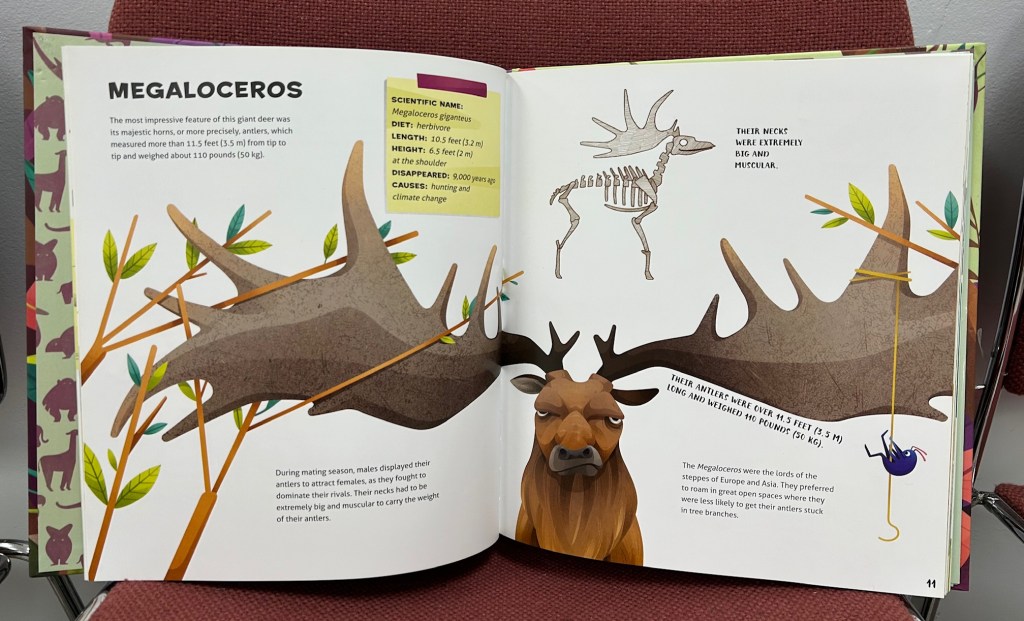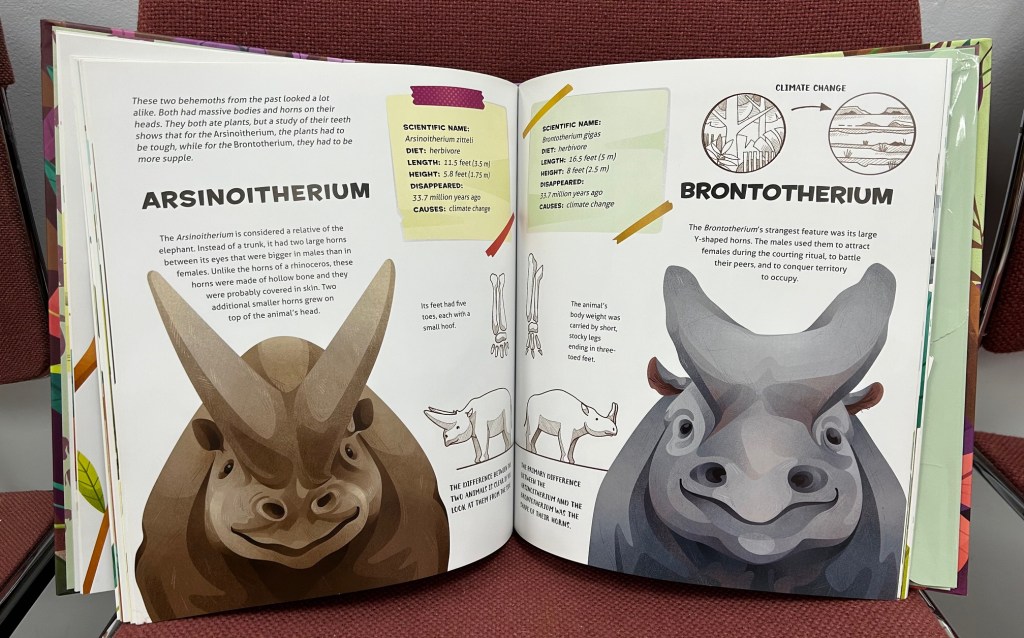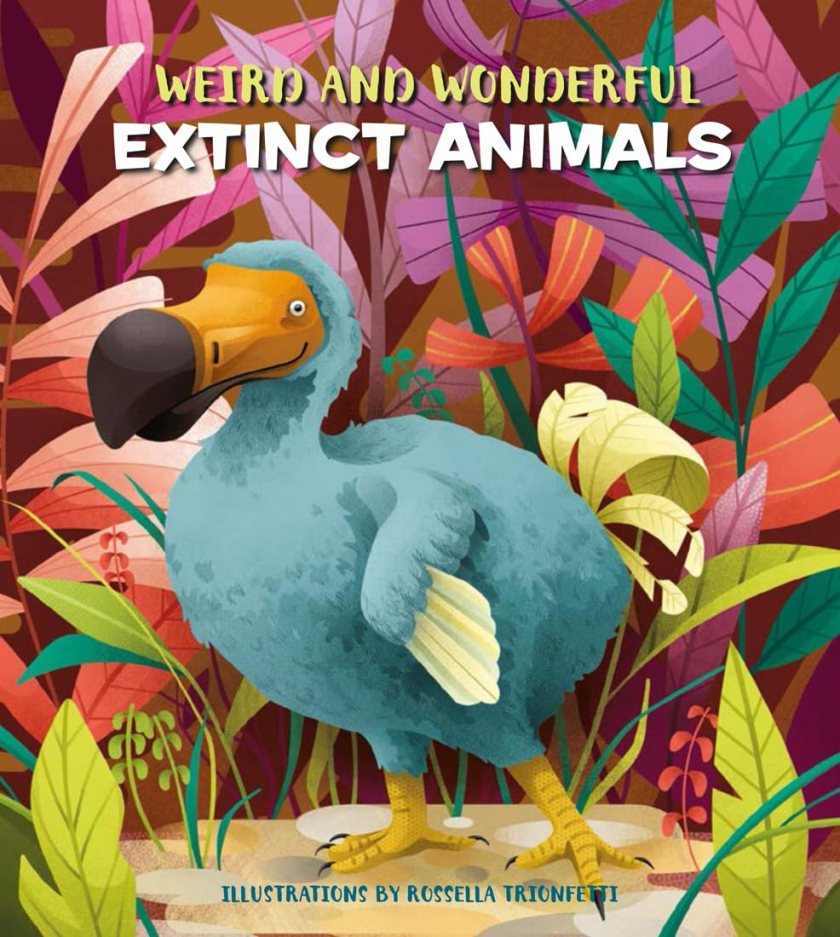I often find that browsing the local bookstores reveals book titles to me that I simply don’t manage to stumble upon when relying on Amazon or larger chains like Barnes & Noble; such was the case on a recent trip to Half Price Books, a smaller chain of stores that sell new & used books, centered around the Dallas, Texas area. Among my finds this time was the colorful Weird and Wonderful Extinct Animals, illustrated by Rossella Trionfetti and written by Cristina Banfi.

Weird and Wonderful Extinct Animals contains a mix of mostly ancient, but also some recent, bygone creatures. There’s little order to the arrangement: “modern” extinctions are clustered towards the end of the book, except for Dodo and Thylacine, which are at the very beginning. I suppose the creators were relying on their popularity to draw readers in, though I’m not sure why grouping them with closer contemporaries wouldn’t have worked just as well. Occasionally, some of the creatures are also paired with relatives or otherwise comparable animals in the same double-page spread, in order to highlight their similarities and differences. This generally doesn’t extend beyond a couple pages, however, as closely related animals can also be found at far opposite ends of the book as well.

The various animals are presented in a fairly typical “species profile” format typical to many books on prehistoric life, with a life reconstruction accompanied by small blocks of text highlighting different bodily features and other fun facts. I enjoyed seeing more recent information such as the ratite DNA study (which found elephant birds to be the closest relatives of kiwis) alongside more long-established facts. The few issues I have involve a couple occasions where the text somewhat glosses over information rather than being outright wrong. Gigantopithecus, for example, is repeatedly compared to a gorilla, which is a valid comparison in terms of lifestyle, though it would have been more closely related to orangutans, which is not mentioned.

The illustrations are a key appeal of the book, and order in which the creators are listed (which you may have noticed I replicated above) may indicate they were the main driver in the making of this book. Rossella Trionfetti depicts all the animals in a delightful, cartoonish style that gives them a lot of fun personality, which balances out the otherwise heavy subject matter of extinction, particularly with more recent animals like the Chinese River Dolphin.

One might take issue with a such lighter tone to a book about extinction, particularly when animals made extinct by humans hands are involved. I suppose that’s just a matter of personal taste, though I personally feel that Small and Tall Tales of Extinct Animals might have done the same thing slightly better, with a similar bit of cartoonish comic relief that doesn’t deemphasize the loss of these wonderful lifeforms. I still rather like this book, however, and I think Weird and Wonderful Extinct Animals makes a place for itself alongside the aforementioned counterpart. While comparing it to a different book that I slightly prefer gives me some pause, I think I’m still comfortable giving my Stomp of Approval to this one as well. Check it out for yourself, and let me know what you think!


